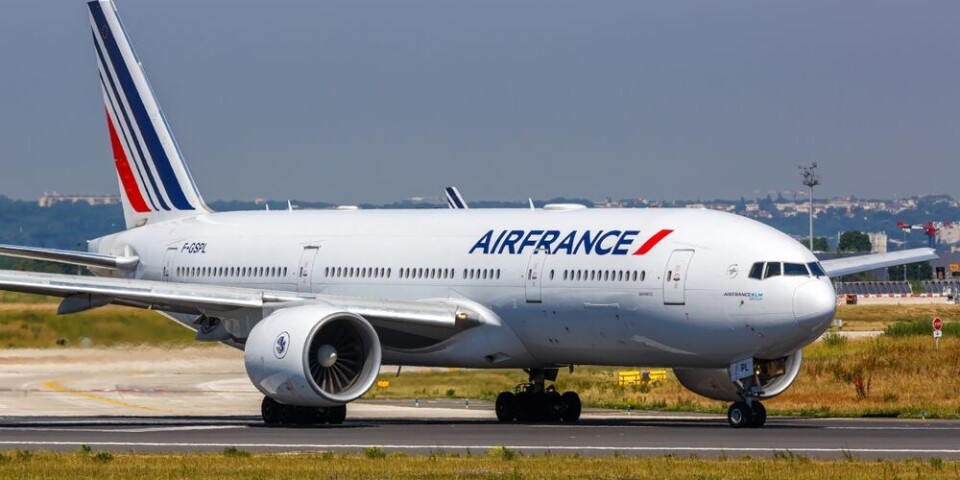EES rollout: which French border points are affected first?
We look at airports, Dover and other ports and Eurostar passengers and what the process involves, including travel questions
Kiosks will be used in some locations to collect passenger data
Getlink
The EU’s long-awaited Entry/Exit System (EES) came into effect on October 12, introducing biometric checks for non-EU travellers entering or leaving the Schengen area – including at French ports, airports, and train stations.
France has begun a phased rollout of the new system, which will continue to expand over the coming months as more passengers are registered and new equipment comes online.
Who is affected by EES?
The EES applies to travellers who are not citizens of the EU, EEA or Switzerland, and who are entering or leaving the Schengen zone for a short stay – either under the 90/180-day visa-free rule (for example, Britons and Americans) or with a short-stay Schengen visa (for nationals who require one, such as Russians, Chinese or Indians).
These travellers must now have their facial image and fingerprints scanned on their first entry after October 12. Their passport details are then stored in a shared EU database used to monitor entries and exits and track time spent in the Schengen zone.
How will new EU border changes affect you?
Connexion subscribers can read our help guide to the EES and Etias for free on the Subscriber Resources page here.
If you are not subscribed to the Connexion either click here to subscribe or click here to purchase the guide for €9.50.
What changes at the border?
At many major French border points – including Calais, Dover, Eurotunnel, Eurostar and the country’s largest airports – passengers are now being asked to complete biometric registration via self-service kiosks or tablet devices before reaching the passport booth.
At smaller crossings, all formalities are carried out directly at the border guard’s desk.
Travellers should expect slightly longer processing times, especially during busy periods, as first-time registration requires additional steps.
However, the process is expected to become faster once more passengers have completed their initial enrolment.
France’s phased rollout
France is using an EU-approved six-month ‘phased implementation’ period to gradually introduce EES at all its Schengen-area borders.
-
From October 12: EES checks began at a number of key entry points, including Calais, Dover, Eurotunnel terminals and major airports.
-
Over the coming months: the system will expand to all airports, ports and international train stations where France conducts Schengen checks.
-
During the transition: manual passport stamping continues alongside EES registration but will end once the rollout is complete.
According to the Interior Ministry, the new pre-registration kiosks and tablets will be activated progressively at each border post as traffic increases.
How EES works in practice
The system records each traveller’s identity, passport details, date and place of entry or exit, and biometric data. It automatically calculates how long the person has stayed in the Schengen area to ensure compliance with the 90/180-day rule.
After the first registration, subsequent crossings will normally require only a facial scan, allowing for a quicker process.
EES replaces the need for manual passport stamping, which has long been used to track non-EU stays.
Ports and terminals
Dover (France-bound)
EES checks began on October 12 for lorry drivers and coach passengers.
Car, motorbike and foot passengers are due to be added from November 1.
Travellers must leave their vehicles to use the kiosks before proceeding to French border control. Coach operators have been advised to allow three hours before departure instead of two.
Calais (UK-bound)
All lorry drivers are now subject to EES registration at the border booth.
Some coaches are being processed gradually: selected vehicles are directed to a dedicated building where passengers register at kiosks before continuing their journey.
Car passengers are expected to be brought into the system in November, with agents using tablets at vehicle windows to complete registration without passengers leaving their cars.
Eurotunnel
Coach and freight traffic are already included. Passenger vehicles will follow in the coming weeks.
Eurotunnel says its kiosks do not display “travel questions”, leaving any further queries to the discretion of the border guard.
Eurostar
EES registration has begun at London St Pancras and Paris Gare du Nord, initially for selected routes and passenger groups.
The rollout will expand over the next six months, with the company aiming for minimal disruption to check-in times.
Airports
All major French airports have now started EES processing for non-EU short-stay travellers.
The airports organisation UAF says waiting times have increased slightly as each passenger’s biometric data is collected, but these are expected to reduce as more travellers complete first-time registration.
At airports equipped with Parafe e-gates, the government plans to integrate the EES database so that eligible travellers can use the gates automatically for future crossings.
France is also working on a technical solution to allow non-EU residents in France (those with long-stay visas or residency cards) to continue using these gates.
What questions may be asked?
Border guards can still ask the same questions as before, for example about:
-
the purpose and length of your stay,
-
proof of accommodation,
-
return ticket,
-
proof of sufficient funds, and
-
medical insurance.
These are part of existing Schengen Borders Code provisions and not a new feature of EES.
Kiosks may include some of these prompts on screen, but guards retain discretion to ask them in person if needed.
For visitors staying with friends or family, an attestation d’accueil is not required if travelling visa-free, though a written invitation and sufficient financial means should be available if requested.
What travellers should know
-
Allow extra time for border formalities, especially if crossing for the first time since October 12.
-
Bring key documents (passport, return ticket, proof of stay, insurance, financial means).
-
Once registered, future trips should be quicker, as the system will recognise your biometric record automatically.




























